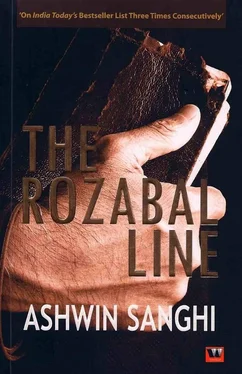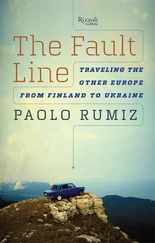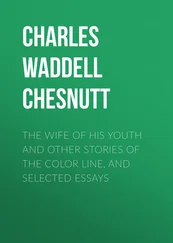
Ashwin Sanghi
The Rozabal Line
Copyright © Ashwin Sanghi 2007
This book is a work of fiction. Names, characters, places and incidents are products of the author’s imagination or are used fictitiously. Religion, history and factual narrative have been liberally interspersed with the fictional narrative in order to give context and colour to the plot.
Any resemblance to actual events, locales, organisations or persons-living or dead-is entirely coincidental. Any publicly recognisable people or historical or mythological personalities are used as characters in fiction and the author does not believe that the events around, or dialogues attributed to them actually happened.
Wherever possible, notes have been provided at the end of the book to explain, justify, attribute or acknowledge. One does not, however, need to refer to these notes to enjoy the story itself.
I am obliged to my wife and son who ungrudgingly tolerated my persistent absence from their lives while I was writing this book, while juggling the rest of my life. I am beholden to my family, which supported me in my endeavours-including my writing. I am thankful to various authors and producers of original or derived works. A separate acknowledgements section in the back lists these in detail.
I am grateful to my editor, Prita Maitra, and my publisher, Westland Limited & Tranquebar Press, especially Gautam Padmanabhan, without whom none of my novels-including this one-would have seen the light of day.
Finally, I am fortunate to be the grandson of the late Shri Ram Prasad Gupta, and grandnephew to his brother the late Shri Ram Gopal Gupta. Their blessings move the fingers that hold my pen.
Srinagar, Kashmir, India, 2012
The onset of winter in idyllic Kashmir meant that the days were gradually getting shorter. Even though it was only three in the afternoon, it felt like nightfall. Icy winter winds, having wafted through the numerous apple and cherry orchards of the area, sent a spicy and refreshing aromatic chill to the man’s nostrils. The leather jacket and lambswool pullover underneath it were his only comfort as he knelt to pray at the tomb.
Father Vincent Sinclair rubbed his hands together to keep warm as he took in the sight of the four glass walls, within which lay the wooden sarcophagus. The occupant of the tomb, however, resided in an inaccessible crypt below. Standing in front of a Muslim cemetery, the tomb was located within an ordinary and unassuming structure with whitewashed walls and simple wooden fixtures.
Vincent’s blond hair, blue eyes, together with his athletic build and pale skin clearly marked him out as separate and distinct from the locals. The goatee and rimless spectacles completed the slightly academic look.
The sign outside informed visitors that the Rozabal tomb in the Kanyar district of old Srinagar contained the body of a person named Yuz Asaf. Local land records acknowledged the existence of the tomb from A.D. 112 onwards. [1]
The word ‘Rozabal’, derived from the Kashmiri term Rauza-Bal , meant ‘Tomb of the Prophet’. According to Muslim custom, the gravestone had been placed along the north-south axis. However, a small opening to the true burial chamber beneath revealed that the sarcophagus of Yuz Asaf lay along the east-west axis as per Jewish custom.
Nothing else was out of the ordinary here-except for the carved imprint of a pair of feet near the sarcophagus. The feet were normal human feet-normal, barring the fact that they bore marks on them; marks that coincided with the puncture wounds inflicted in crucifixion.
Crucifixion had never been practised in Asia, so it was quite obvious that the resident of the tomb had undergone this ordeal in some other, distant land.
Mecca, Saudi Arabia, 2012
The thousands of male pilgrims to Mecca during the Islamic month of Dhu-al-Hijjah were dressed identically in Ihram-a simple white, unhemmed cloth. It was impossible to distinguish one pilgrim from another in the white sea of humanity.
After all, this was Haj, and all of Allah’s followers were meant to be equal before Him. Some, however, were more equal than the others.
The simple face and ordinary features did not reveal the secret depths of this particular pilgrim as he performed the Tawaf-circling the holy Kaaba-swiftly, four times, and then another three times at an unhurried pace.
This was Ghalib’s second visit to the Kaaba. A week ago he had already been through the entire routine once. After completing the Umrah, Ghalib had stopped to drink water from the sacred well of Zamzam. He had then travelled to Medina to visit the mosque of the Prophet before performing the final three acts of Haj-journeying over five days to the hill of Arafat, throwing stones at the devil in the city of Mina, and then returning to Mecca to perform a second Tawaf around the Kaaba.
Ghalib was praying: Bismillah ar-rahman ar-rahim. Allah, the most kind and the most merciful. Please do not show your legendary kindness or mercy to my enemies.
He felt refreshed. Blessed. Purified.
The Lashkar-e-Toiba, the Army of the Pure, had been fighting a bloody jihad in Kashmir for the restoration of an Islamic caliphate over India. The outfit was on the radar of most intelligence agencies around the world. Ghalib, however, was not yet even a blip on the screen.
Unknown to most intelligence agencies, the Lashkar-e-Toiba had spun off an even more elite group within itself called the Lashkar-e-Talatashar, the Army of Thirteen, consisting of twelve elite holy warriors who would deem it an honour and privilege to die for the cause of Allah. They were not confined to Kashmir but scattered across the world. [2]
Their leader, the thirteenth man, was their general. His name was Ghalib.
London, UK, 2012
The Department for the Study of Religions was part of the School of Oriental and African Studies which, in turn, was part of the University of London. The school boasted a vast library located in the main school building just off Russell Square.
On this damp morning, faculty librarian Barbara Poulson was attempting to prepare the library for its first wave of students and faculty members at the opening time of 9 am.
Most students would start their search with the library catalogue, which indicated whether the library had the required item. In the catalogue one could find the class mark-a reference number-of the item one wanted and this could be used to find the exact location of the book.
The previous day, Professor Terry Acton had been attempting to locate a copy of the Hindu treatise, The Bhagavad Gita , published in 1855 by Stephen Austin. The absentminded professor had been unable to locate it and had requested Barbara’s assistance. She had promised to find it before his arrival that morning.
She mechanically typed the words ‘Bhagavad Gita’ into the library’s computerised catalogue. There were only two books displayed, neither of which was the one that the professor wanted. She then recalled the professor mentioning that the Bhagavad Gita was actually part of a broader epic, the Mahabharata. She quickly typed ‘Mahabharata’ into the computer and saw 229 entries. The twelfth entry was ‘The Bhagavad Gita, A Colloquy Between Krishna and Arjuna on the Divine’. She clicked on this hyperlink and she had it-the book by Stephen Austin, published by Hertford in 1855. Noting the class mark-CWML 1220-she looked it up on the location list.
Читать дальше













